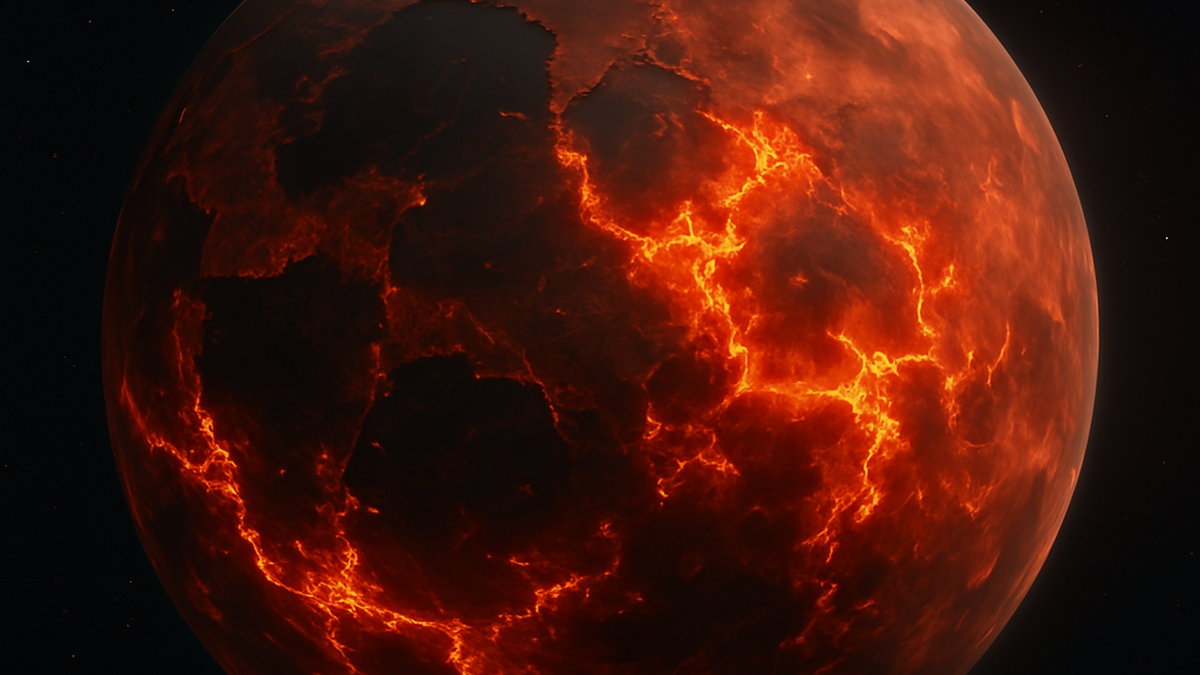A representative illustration of the earth’s Hadean protocrust as it took shape.
| Photo Credit: Image created with ChatGPT
The Hadean protocrust is the name for the earth’s crust — its outermost layer — when it first formed. The ‘Hadean’ prefix refers to the planet’s first geologic aeon. At this time, within 200 million years of its genesis, the earth’s surface was partially molten and almost constantly bombarded by rocks from space. As many volcanoes also raged, the surface was very hot and hellish.
As parts of the magma ocean cooled, the first pieces of the crust began to take shape. It was still somewhat flaky, with some parts sloughing off and new parts solidifying. The thicker parts of the crust slowly formed the first continents, which moved like plates on the asthenospheric mantle, a layer of hot, gooey rock going 400 km down.
The plates soon began drifting into each other, sometimes sliding over, sometimes diving under. Such plate tectonics have left unique chemical signatures in the crust over millennia. In fact, scientists have understood the history of plate tectonics by studying these signatures.
A new study by an international team of researchers led by Macquarie University in Australia has now called this assumption into question. The researchers have reported that the signatures scientists have associated with plate tectonics actually existed in the Hadean protocrust, before the plates began to subduct, calling an important tenet of geology into question.
The study, which used a combination of models and lab studies, will have to be validated by independent research.
Published – April 06, 2025 03:00 pm IST
